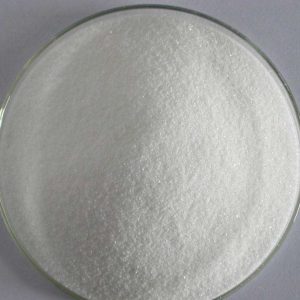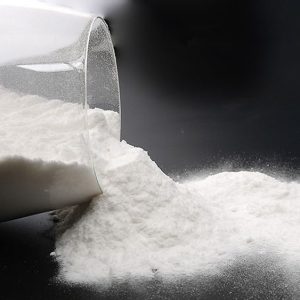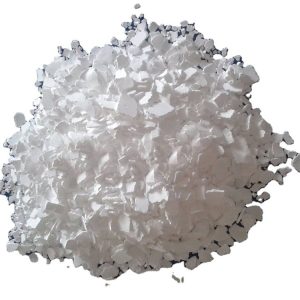Description
Hydrogen peroxide (H₂O₂) is a common chemical compound that most people are familiar with in its diluted 3% solution, often found in medicine cabinets as a mild antiseptic. However, hydrogen peroxide is also available in much higher concentrations, with 50% being a particularly potent and potentially hazardous form. Understanding the properties, uses, and crucial safety precautions associated with 50% hydrogen peroxide is paramount for anyone handling or considering using it.
What is (H₂O₂) ?
At its core, hydrogen peroxide is a simple molecule composed of two hydrogen atoms and two oxygen atoms. The ‘50%’ refers to the concentration of hydrogen peroxide in a solution, meaning that half of the solution by volume is pure H₂O₂ and the other half is usually water. This high concentration gives 50% hydrogen peroxide significantly different properties than the dilute solutions we typically encounter.
Key Characteristics of 50% Hydrogen Peroxide:
Powerful Oxidizer: It’s a potent oxidizing agent, meaning it readily donates oxygen atoms to other substances. This property is responsible for its bleaching and disinfectant powers, but also its potential dangers.
Highly Reactive: 50% hydrogen peroxide reacts readily with various materials, including organic substances, metals, and some plastics.
Corrosive: This concentration is corrosive to skin, eyes, and mucous membranes upon contact.
Unstable: While relatively stable under proper storage conditions, 50% hydrogen peroxide can decompose into oxygen and water, particularly when exposed to heat, light, or contaminants. This decomposition can be rapid and even explosive in certain circumstances.
Uses of 50% Hydrogen Peroxide (Primarily Industrial/Technical):
Due to its high concentration and reactivity, 50% hydrogen peroxide is not intended for personal or household use. It’s primarily employed in industrial and technical applications, including:
Industrial Bleaching: Used in the paper and textile industries for bleaching pulp, fabrics, and other materials.
Chemical Synthesis: Serves as a reactant in various chemical processes, including the production of other peroxides and organic compounds.
Wastewater Treatment: Used to oxidize pollutants and detoxify industrial wastewater.
Rocket Propellant: In extremely high concentrations, hydrogen peroxide can be used as a propellant for rockets and specialized engines.
Mining: Used in certain mining operations for ore processing.
Sterilization in specific industrial settings: Sometimes used for sterilizing equipment where other methods are not feasible, but this often requires specialized facilities and trained personnel.
The Importance of Safety:
Working with 50% hydrogen peroxide demands meticulous attention to safety. It is not a product to be handled casually. Mishandling can lead to severe injuries. Here are crucial safety precautions:
Always Wear Appropriate Personal Protective Equipment (PPE): This includes chemical-resistant gloves, safety goggles, a face shield, and a lab coat or apron.
Work in a Well-Ventilated Area: Hydrogen peroxide decomposition can release oxygen gas, which can be a fire hazard in confined spaces.
Never Mix with Incompatible Materials: Avoid mixing with organic materials, metals, or reducing agents, as this can cause dangerous reactions or explosions.
Store Properly: Store in a cool, dry, dark, and well-ventilated area away from heat, light, and incompatible materials. Use vented containers designed for hydrogen peroxide to prevent pressure buildup.
Handle with Care: Pour slowly and carefully to avoid splashes.
Seek Professional Assistance: If you are unfamiliar with working with 50% hydrogen peroxide, consult with a qualified chemist or safety professional.
Do Not Ingest: Ingesting any concentration of hydrogen peroxide is dangerous and can be fatal.
First Aid Measures:
In case of accidents, immediate action is crucial:
Skin Contact: Immediately rinse the affected area with copious amounts of water for at least 15 minutes. Seek medical attention.
Eye Contact: Flush eyes immediately with water for at least 20 minutes. Seek immediate medical attention.
Inhalation: Move to fresh air. If breathing is difficult, administer oxygen. Seek medical attention.
Ingestion: Do not induce vomiting. Drink large amounts of water or milk. Seek immediate medical attention.
Conclusion:
50% hydrogen peroxide is a powerful chemical compound with valuable industrial applications. However, it is essential to approach it with a deep understanding of its properties and a commitment to strict safety protocols. This is not an everyday product and should only be used by trained professionals with access to appropriate equipment and facilities. Understanding the potential hazards and taking proper precautions is crucial to handling this potent chemical safely and effectively. This article is for informational purposes only and does not constitute professional advice. Always consult with qualified experts before working with hazardous chemicals.







Reviews
There are no reviews yet.